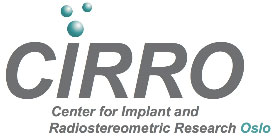Rationale of CIRRO

Clinical research is compared to basic research, often dependent on imprecise methods. The number of patients needed to demonstrate a difference between two treatment methods is therefore large. In musculoskeletal research common methods like plain radiographs are imprecise for detecting healing of bone, loss of bone (osteoporosis), body-composition and movement of implants or positions of joints. During the last decades more precise methods have been developed1. We have established a centre for radio-stereometric analysis (RSA) and dual energy x-ray absorptiometry (DXA). With RSA small movements of implants or joints can be measured with a precision of less than 0.1 mm for translation and 0.3° for angular movements. With DXA bone remodelling and body composition can be measured precisely within a few percent.
